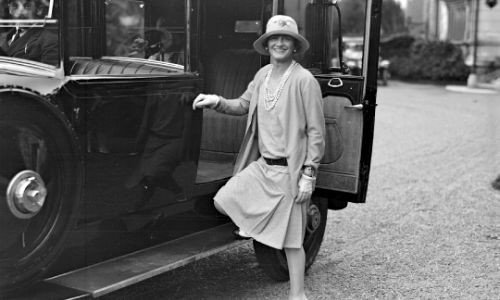Gabrielle Chanel, nicknamed “Coco”, is one of the most important fashion designers of the twentieth century. There are undoubtedly many factors that made her stand out so prominently in the 1900s, a period of developments that would become a milestone in fashion history. Chanel created an indispensable style for women rather than fashion. When she said “Fashion passes, style remains”, it was as if she saw 100 years after she took the scissors in her hand. Fashion has come and gone, but the style created by Chanel has continued to exist today as it did yesterday.

Born on August 19, 1883, Gabrielle Bonheur Chanel, aka Coco Chanel, was born in Samour, a small town in western France, surrounded by vineyards, near the Loire River. She was the second child of Eugénie Jeanne Devolle, 20, who, like most middle-class women in 1800s Europe, earned a living by washing clothes, and Albert Chanel, 28, who sold work clothes and underwear on the streets. Not even a year after their first daughter Julia was born, the couple were already parents for the second time, and they were not married. Although she attempted to erase it in the following years, official records documented that Chanel was born in a hospice in 1883. Known as the Sisters of Providence, it was a home run by nuns where the needs of the poor were met. Later, she would be evasive in denying this fact, or she would say that she was born on a train while her family was traveling. Born in 1883 was a terrible fact; she denied it for years. The year of her birth changed according to Chanel’s will, or even her pleasure.

Despite their financial difficulties, Chanel would always deny this poverty and would say in the years to come that she was the daughter of a wealthy family. Her father had been born in Albert in a workhouse, the son of a peddler and carried on his father’s profession. When Chanel was born, her father was nowhere to be seen, as if he had disappeared. He appeared occasionally, came to see Jeanne, but refused to marry her. In 1884, when Chanel was fifteen months old, the couple finally married. Nothing changes; her father continues to elope. In 1885 Alphonse was born, Antoinette in 1887, Lucien in 1889 and Augustin in 1891. But Augustin died when he was only six months old.
- Comemadre; A black humor questioning transcendence in science and art
- A Groundbreaker: John Von Neumann
Anne Jeanne tries to survive with her children in the railroad town of Brive-la-Gaillarde on the main line from Paris to Toulouse. Frequent pregnancies, pneumonia and poverty gradually lead her to her death. In February 1895, when Chanel was 11 years old, her 32-year-old mother died of tuberculosis. Chanel would remember her mother, whom she lost at a young age, as a faint silhouette throughout her life. Her father sent his sons to work as farm laborers and left his daughters Chanel, Julia and Antoinette in an orphanage. The orphanage was the Aubazine Convent in the Nouvelle-Aguitaine region.
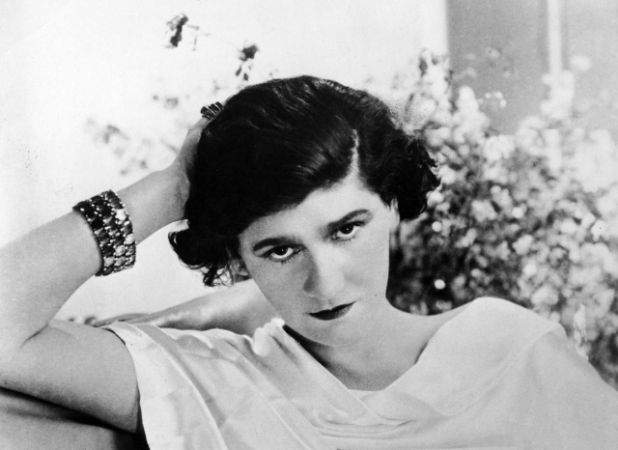
Throughout her life, Chanel never admitted that she was left in an orphanage, she never even used that word. When she told her life story, she said that when her mother died, her father went to America, her sisters went to a nun’s school and she was left with her aunts. She had almost convinced herself that she was born into a rich family. She embellished her childhood with stories about her aunts and wanted to be known as such. She said that her aunts showed her no affection. When she said that her father had visited her a few times with her aunts, she fed her stories to justify her situation. In these stories, her father was a young man, widowed with four children. And his children were well taken care of. But in reality it was nothing more than a story of long years in an orphanage, of a broken family, of a father who never once attempted to see his children, of little girls and boys with broken dreams. The orphanage with its strict rules offered Chanel nothing more than a simple life. But it was here that she learned something that would change her life in the years to come: how to sew.

When Chanel turned 18, she had to leave the orphanage where she had lived for six years. She went to live with her childless aunt Louise and her husband Paul. They loved Chanel and her aunt Adrienne, a year older than her, as their own children. Here she starts her education at the Notre Dame school in Moulins, both run by nuns.
He was not well liked at school. The other young people, who paid for their education and wore expensive clothes, despised Chanel, who wore second-hand and simple clothes. The abbot of Notre Dame finds a job for Adrienne and Chanel on L’horloge Street. They would work as seamstresses and clerks in a haberdashery that sold funeral clothes, wedding dresses and baby clothes to the city’s rich. The job also provided them with accommodation. They shared a room in the shop’s attic together. Chanel not only learned to sew, she loved it. Her talent and command of her work were easily visible from the outside. On weekends, they found work at a different tailor’s shop. Here, too, they sewed trousers for cavalry soldiers.

Soon Adrienne and Chanel began to be noticed by the cavalry soldiers at the tailor’s shop where they worked. The cavalry often invited them in the evenings to La Rotonde, a cabaret in a small park in Moulins, where concerts were organized for the locals. The cabaret was an entertainment venue that emerged in Paris in the late 15th century. In this entertainment, identified with French culture, the audience sat at tables, ate their food and drank their drinks while watching dance and music performances. Chanel was mesmerized by the people participating in the entertainment together, the songs and dances on the stage. Chanel started to sing in cabarets in the evenings; the name Coco was given to her by her audience because of the songs she sang during this period, “Ko Ko Ri Ko” and “Qui qu’a vu Coco”.
In 1906, at the age of 23, she met Étienne Balsan, a young French officer and wealthy textile heir, one evening on stage. For the next three years, she lived with him at his chateau Royallieu near Compiègne, known for its equestrian and hunting life. Through this association, she learns about luxury and elegance and meets Parisian society.
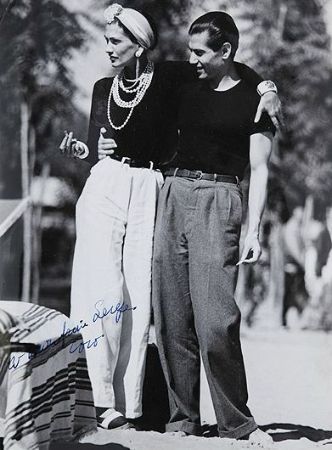
Arthur Edward “Boy” Capel was an English polo player and friend of Étienne Balsan. He fell in love with Chanel as soon as he saw her. His relationship with Chanel apparently began in 1909, while Etienne Balsan and Chanel were still together. Capel introduced the young girl to literature. It was he who financed Coco Chanel’s first store. Capel, whose style, especially his blazers, contributed greatly to the formation of the Chanel style, became a source of inspiration for her. However, he was never faithful to Chanel. Their relationship lasted nine years; even after Capel married, it continued until his death in late 1919. Capel dies in a car accident in 1919.
In 1910, Chanel opened her first shop with the support of her lover Capel; it was a shop where she made and sold her hats, which had been very popular since her orphanage years. The hats she made here were quite different from the fancy and exaggerated models used by Parisian women. They were usually plain, even the kind that peasant women wore to the market or to church. In his shop, he offered an alternative style of clothing, mixing with working people and being influenced by their work clothes, so he designed sailor jackets, sweaters and straight skirts. This simplicity is the main idea behind the clothes he would later create.

Within a few years, she produces her first dresses and achieves enough success to open boutiques in Deauville and Biarritz. During the First World War, she frees women who have sent their husbands to the army and are in search of freedom from corsets and designs different clothes. In 1916, he opened his “haute couture” boutique, and by 1917 he was so famous that he employed more than 300 tailors. In 1919, he opened the Chanel fashion house in Paris. She dressed thousands of women thanks to pret-a-porte (ready-to-wear), which she started after opening her atelier, which she had closed during the war years, after the war.
Chanel’s first clothes were revolutionary. She used very cheap and simple materials. She designed them based on traditional or sporty men’s clothes. Most importantly, these garments gave women unprecedented freedom of movement. Chanel also encouraged the use of costume jewelry. “Always discard, always subtract, nothing should be added, can anything be more beautiful than simplicity and the freedom of the body?” she warned her clients. Vogue magazine wrote of him that “the best part of his work, his great contribution to the history of fashion, is the easy, life-appropriate garment.”

In the early 1920s, the Russian composer Igor Stravinsky, who also inspired the movie Big Love, entered Chanel’s life. Stravinsky was a musician living in exile in Paris with his wife suffering from tuberculosis and four children. Chanel first fell in love with Stravinsky’s talent and then with herself.
In fact, she met Igor Stravinsky during the premiere of the ballet “Sacre du Printemps” in Paris in May 1913. This avant-garde show and Igor Stravinsky’s creative universe fascinated Chanel. Seven years later, in 1919, after the death of her lover Boy Capel in a car accident, their relationship begins. Although their relationship with the composer, who was married and had 4 children, was short and secretive, it was very rich. Both artists mutually inspired each other. Chanel develops her famous perfume Chanel No 5 with the inspiration of this love. Chanel, who did not want to have an affair with a married man, did not stop admiring Stravinsky’s personality and art even though she ended the relationship. It is said that she even contemplated suicide because he did not divorce his wife and marry her.

Chanel is sitting in a café with a friend on the Cote d’Azzure in 1920 when her friend greets a biologist friend of hers, Monsieur Beaux. Coco turns this into an opportunity and goes to visit Monsieur Beaux’s laboratory. She is interested in perfume and wants him to create a revolutionary fragrance for her. Monsieur Beaux tells her about a perfume using synthetic fragrances.
Two months later, M. Beaux arrives in Paris with his products. He gives each product a number. In a meeting with Coco Chanel, he tells her to smell each product and mark the numbers she likes. He smells up to number 24 one by one and finally makes his decision. “No 5 and No 22,” she approves. After choosing the fragrance, it’s time for the packaging, and while sitting in the Café, she notices an inscription written in the style of the cubist movements created by Pablo Picasso and George Braque. She decides to work with a sculptor for the design of her perfume, a young artist she gets to know through her friend Misia. The young artist designs for her a transparent rectangular prism bottle with rounded corners of incredible simplicity. The final task is to name the perfume. “It will be Chanel No. 5,” Coco tells Monsieur Beaux, even though he suggests that she could consult contemporary poets. Monsieur Beaux tries to talk her out of it, saying that this is the first time this has ever been done, but to no avail.

Dmitri Pavlovich, Grand Duke Dmitri Pavlovich of Russia, was a Russian Imperial Highness and one of the few Romanovs to escape being killed by the Bolsheviks after the Russian Revolution. While living in Paris, he met Coco Chanel and became one of her lovers. He met Chanel through her lover at the time, the opera singer Marthe Davelli. Their relationship, which began in 1921, lasted about a year. It is said that she inspired him about Russian culture and the references we can find in Coco Chanel’s fashion; the Cuir de Russie fragrance is said to be the result of this love.
“You are born into a family, but you don’t belong to it. I don’t like the concept of family and I can’t think of anything more horrible than family.” Coco Chanel almost never lived the concept of “family” to the fullest. When she was old enough to realize the wounds inflicted on her child heart; she raised a tough, authoritarian, some say, grumpy, even heartless woman. Like all broken-hearted people who try to appear strong, she built large walls around herself. She never trusted men. She earned money with her body and used it to protect her independence. She chose lovers who were strong and could help her.
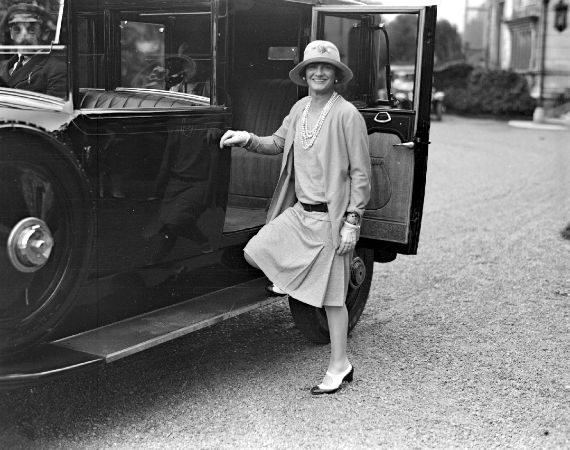
Chanel, who inspired the women of the period with her influence that left her mark on the 1920s, was influenced by British menswear. Coco Chanel stood out with her simple, easy-to-wear, sporty and comfortable designs, breaking away from the detailed look of tradition. Chanel preferred to produce her designs with knitting and brought a different perspective to this production method, which had only been used in underwear and socks until then. Chanel’s knitted coats and suits became indispensable for active and modern women.
One day, while riding a horse, she angrily cut her long, puffy dress in half and thus, for the first time, came up with the idea of women wearing pants. She wore red lipstick, which was only for prostitutes in her time. Coco Chanel also revolutionized the textile industry, taking the jersey fabric, which was used to make men’s underwear but which they found too itchy and could not see the value it deserved, and using it in women’s clothing. Chanel would say that by using jersey, she liberated the body and captured a new image. She thus becomes the most powerful figure in the women’s independence movement after the First World War.

Pierre Reverdy was a French poet whose work was inspired by and then began to influence the provocative art movements of the time – Surrealism, Dadaism and Cubism. One of Reverdy’s most enduring and profound relationships was with Coco Chanel. The intense period of their romantic relationship lasted between 1921 and 1926. However, even though their relationship ended, a deep attachment between them turned into a great friendship that would last for forty years.
Pierre Reverdy was a French poet whose work was inspired by and then began to influence the provocative art movements of the time – Surrealism, Dadaism and Cubism. One of Reverdy’s most enduring and profound relationships was with Coco Chanel. The intense period of their romantic relationship lasted between 1921 and 1926. However, even though their relationship ended, a deep attachment between them turned into a great friendship that would last for forty years.

The twentieth century is a period of great changes in Western society. Fashion before World War I is a continuation of the XIXth century. The poverty brought about by World War I and the entry of women into working life changed women’s fashion. After Paul Poiret’s designs without corsets, Chanel’s revolutionary innovations such as knitwear suits, skirts ending below the knee, and trousers in women’s clothing in 1920 brought a new dimension to women’s fashion.
The most practical way to dress in the 1920s was to wear knit jackets, sweaters and pleated skirts pioneered by Chanel. Chanel’s sweaters and pleated skirts 20-25 cm. above the floor, and twit jackets with internal pleats became very fashionable. One of the most radical of her innovations was to replace pearls and other precious stones with fake jewelry. This jewelry soon became very popular.
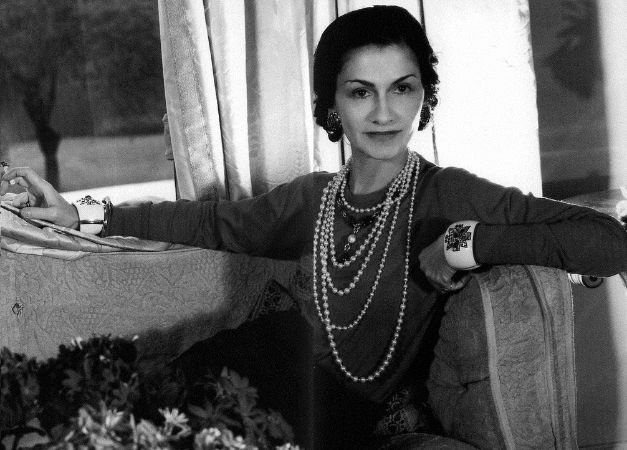
He made women wear pants for the first time. She took black, worn at funerals, out of its mourning mood and made it an indispensable part of fashion. She designed the eponymous and timeless “Chanel Tweed Jacket” from the tweed fabric worn by aristocratic British men. She has always been indispensable with her No: 5 perfume, chain-handle bag and ballet flats.
The “little black dress” of the 20s is thought to have been inspired by three things. First of all, the death of Chanel and the feeling of mourning, the thought and fear of aging that existed even for young women, and the desire of even traditional women to look stylish. She used an air of masculine superiority in womenswear, with stiff white collars and prominent cuffs. She also softened the blackness and seriousness of her childhood memories of sadistic nuns into her designs.

- Chanel was the first to use the jersey, formerly used in men’s underwear, in women’s clothing.
- In the years when white skin was in fashion, Chanel made tanned skin popular by attending events with tanned skin.
- Chanel sewed the first little black dress and wore it to a friend’s funeral.
- She popularized long fake pearl necklaces and imitation jewelry that were repeatedly wrapped around the neck.
- She was the first to make women wear leggings, pants and miniskirts.
- He was the first to draw designs similar to the swimsuits worn today.
- He made a secret compartment in the front of the quilted bags we carry, where love letters could be hidden.
- The jackets she designed are copied by different brands and sold as “Chanel style”.

Chanel met Hugh Richard Arthur Grosvenor, Duke of Westminster, the richest man in Britain, at a party in Monte Carlo in 1925. “I chose the one who protected me best,” Coco would say in the late spring of 1924, when deciding between her then lover Dimitri and Westminster. The Duke of Westminster was a womanizer, but it was his wealth that facilitated all his numerous infidelities. He bought a house for Chanel in London’s prestigious Mayfair neighborhood; their relationship lasted ten years. But Chanel never neglected her work.
Back in Paris, Chanel collaborated with French directors in different ways. She designed costumes for all the female roles in Marcel Carné, Le Quai des Brumes (1938), Jean Renoir, La Marseillaise (1938), The Human Beast (1938) and The Rules of the Game (1939). In this film, one of the actresses poses with her hands in her pockets, a concrete expression of the masculine and feminine style that Gabrielle Chanel loved. After the release of the film, war is declared. Chanel closes her fashion house in 1939 due to the war. This is Chanel’s last artistic collaboration with cinema before the war.
Designer Paul Iribe was part of a Parisian bohemian group, a cosmopolitan mix of art world and elite personalities. The group included Misia Sert and her husband, Spanish painter José-Maria Sert, Jean Cocteau and his lover, French actor Jean Marais, Diaghilev, ballet dancer Serge Lifar and Coco Chanel. It was a sensual, flirtatious group full of intrigue. In 1931, the relationship between Chanel and Paul Iribe came to a dramatic end. On September 21, 1935, Iribe suddenly collapsed and died while playing tennis at his villa on the French Riviera. Chanel deeply felt the pain of her lover whose death she witnessed; she mourned him for a long time.

During the occupation of France in 1940, Chanel did not flee the country and established close ties with the occupying Germans. Closing her stores, the 57-year-old Chanel took advantage of a privilege afforded to few Frenchmen in occupied Paris and lived in the luxurious Ritz hotel with 44-year-old German lawyer and Nazi official Baron Hans Günter von Dincklage.
In his 2012 book Sleeping With The Enemy, American journalist and documentary filmmaker Hal Vaughan describes the relationship as follows: “Chanel was the perfect opportunist. The Nazis were in power, and Chanel leaned toward power. That’s how she lived her whole life. Chanel believed in nothing but fashion. She believed in beautiful clothes, in her own work, and she was right. She didn’t care about Hitler or politics or Nazism.”
According to Vaughan, the handsome German officer Baron Hans Günter von Dincklage was not a “playboy playboy”, but a professional member of the Abwehr, German military intelligence. He writes that Chanel worked for German military intelligence, and that Chanel entered German records as Agent F-7124 and under the code name “Westminster”, after the title of a former lover, the duke.
However, author Vaughan admits that Chanel, who was tasked with using her connections to obtain political intelligence, was unable to go beyond small talk. According to Vaughan, “She was not a spy taking photographs, smuggling documents. She never did that. She was making connections, facilitating things. He knew everybody in Spain; he knew everybody in England and he helped the Nazis.”
Vaughan says: “I went to many archives from Washington to Berlin and found many files that support my research,” but many readers in America do not believe him.
The Chanel company denied what was written in the book, stating that Von Dincklage was a British citizen and had known Coco before the war. They go on to add that Chanel had Jewish friends, including the Rothschild family.

At the end of the war, when it came to France’s punishment of those who collaborated with the German occupation force, Coco Chanel fled to Switzerland and was saved from prosecution by the intervention of Winston Churchill according to Vaughan and the British royal family according to other experts.
After spending nine years with her lover in Lausanne, Chanel returns to Paris. Some Parisians hated her, but British and American women loved her. After the war, Coco Chanel reopened her fashion house with the help of a Jewish partner, and after her return to the fashion scene in the 1950s, her aesthetic vision is revealed in her tweed jacket, which reflects the perfect adaptation of cinema aesthetics to the modern world.
On February 5, 1954, at the age of 70, Chanel showed her new collection and the fashion show was attended by editors from American Vogue and Harpers Bazaar. Vogue introduced this collection as “the return of the coquette”.

The life of Coco Chanel, who also designed costumes for theater plays and movies, was the subject of a musical on Broadway in 1969. Coco Chanel worked until January 10, 1971, when she died at the age of 88. Chanel, a “haute couture” brand, does not produce a ready-to-wear collection until 1978. Since 1980, more than 40 Chanel boutiques open around the world. Famous couturier Karl Lagerfeld, who changed the brand’s line with his eye-catching designs, was the chief designer of the Chanel fashion house from 1982 until his death in 2019.

